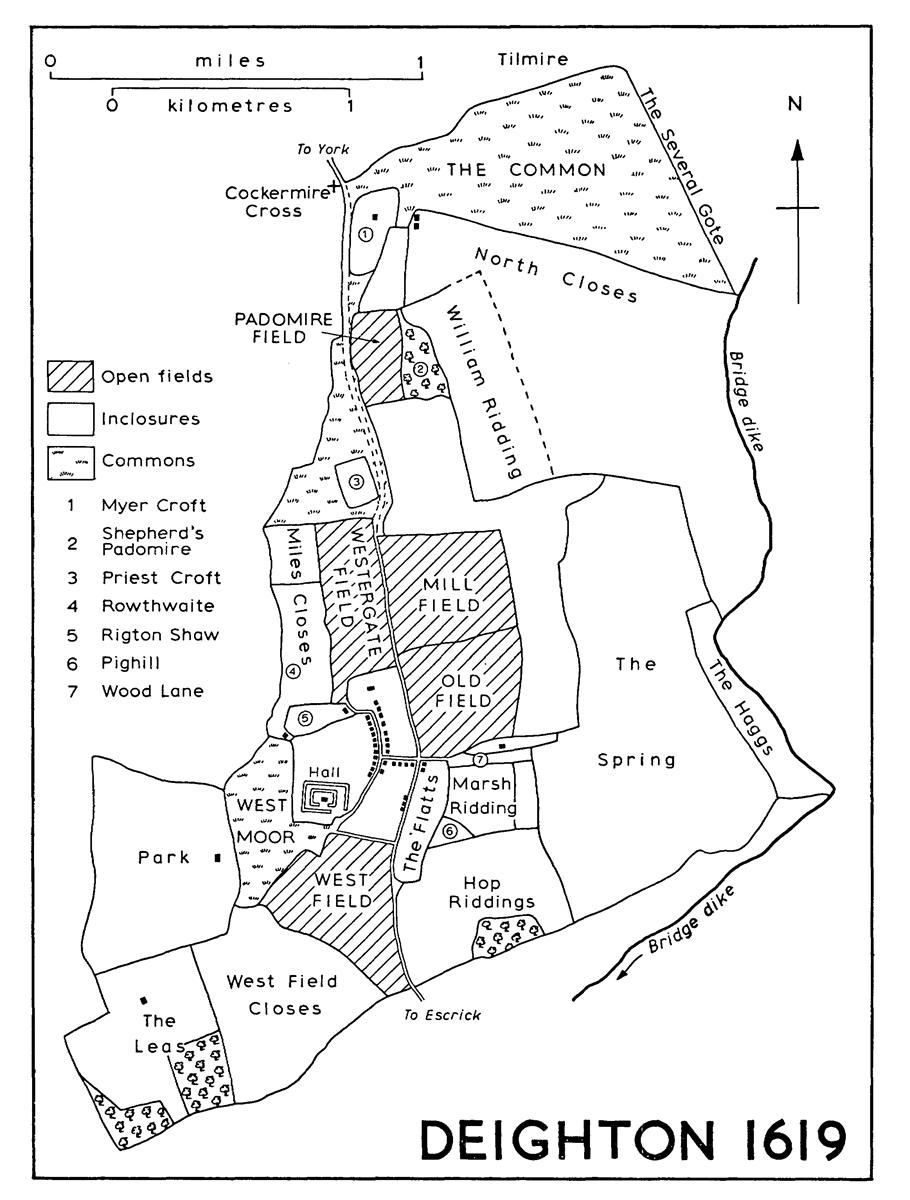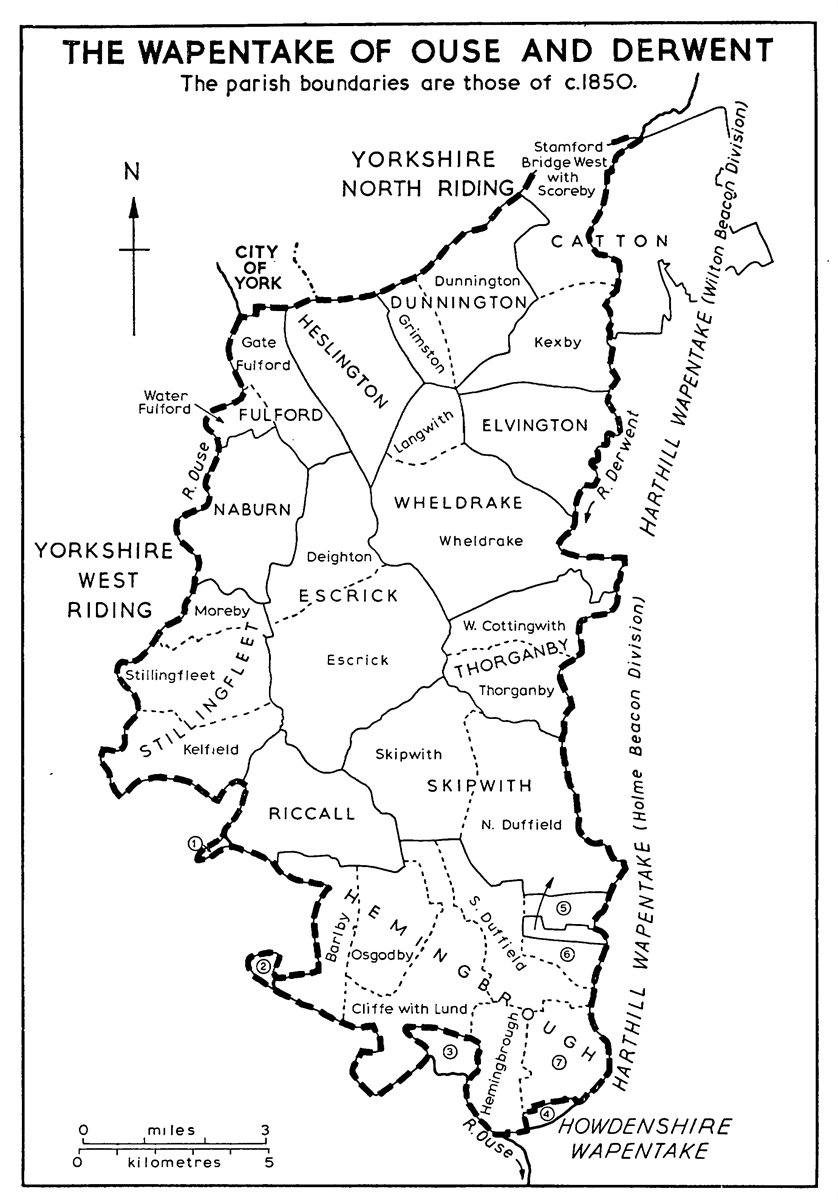Deighton History
 Deighton - OS grid reference SE628441
Deighton - OS grid reference SE628441
Deighton is a village and civil parish in the unitary authority of the City of York North Yorkshire, England. The parish includes most of the hamlet of Crockey Hill. It lies on the A19 about five miles south of York in the heart of the Vale of York. The city of York stands at its northern edge.
According to the 2001 census the parish had a population of 308.
The land consists mostly of drifts of clay, sand, and silt, and organic matter deposited in the shallow water that occupied the vale during the final stage of glaciation in northern England. Successive limits of the Vale of York glacier during that period left pronounced terminal moraines of boulder clay, sand and gravel and therefore yields very fertile soils.
In prehistoric and Roman times the moraines served as route ways across the marshy vale, and Anglian and Scandinavian settlers established several villages upon them, like Escrick, Wheldrake, and Dunnington and presumably Deighton. In the early Middle Ages much of the area lay within the royal forest of Ouse and Derwent.
Widespread woodland and common wastes slowly gave way to produce a distinctive agricultural landscape. The small open fields, large commons, and extensive early inclosures contrast strongly with the predominantly open-field economy of the Yorkshire Wold to the East
Deighton History
Deighton in 1086 was held by Count Alan of Clifton. It consisted of a single 4-carucate estate (1 caracute was amount of land tillable by an 8 oxen team in a ploughing season).
Between 1158 and 1184 the lordship of Deighton was given to St.Mary's abbey, the estate was granted by the abbey between 1161 and 1184 to Duncan Darel, who also received Geoffrey de Brettanby's land at Deighton and 2 bovates which Peter of Wheldrake had held.
In 1202-3 Darel granted Deighton to Ralph de Mara, whose daughter and heir Mabel married Geoffrey de Nevill. In 1273 it was given by Hugh de Nevill to the abbey, which also received several smaller holdings in the township. Thenceforth the manor of DEIGHTON was held by St. Mary's Abbey.
At the Dissolution the manor was worth about £26. It was granted by the Crown in 1542 to John Aske and was held by the Askes until 1596.

Then the Robinson family retained Deighton until, after the death of Arthur Robinson, it was divided in 1713 between his daughters Grace Braithwaite and Elizabeth Denton. Most of the Braithwaite share passed to the Thompsons in 1743 and 1758, but some went to Thomas Eadon in 1741 and was acquired by Beilby Thompson in 1786.
It subsequently descended with Escrick capital manor. Various additions in Deighton were made to the estate, which comprised 1,262 a. in 1920 and 844 a. in 1972. The Denton half of the manor was divided in 1715 between Elizabeth's daughters Mary and Anne, who married John and Robert Bell respectively. Anne succeeded to her sister's share, and her son J. T. Bell held half the manor until 1800, when it was bought by H. J. Baines.
The Baines family still had a small acreage in Deighton in 1971, but most of the estate was sold in 1953 and 1959 when about 470 a, including Deighton Hall farm, passed to Melville Fairburn and Anna Belsham.
The manor-house was included in the Denton half of the manor at the partition of 1713. In 1619 it was described as 'fair and new built and moated round about', with a dovecot in its grounds, and in 1672 it had 14 hearths. Although the house now on the site incorporates two carved overmantels, some doors, a window, and some structural timbers of the early 17th century, it is a small square building and appears to have been erected in the earlier 18th century, perhaps soon after the partition of the estate, as a farm-house. The site is still moated.